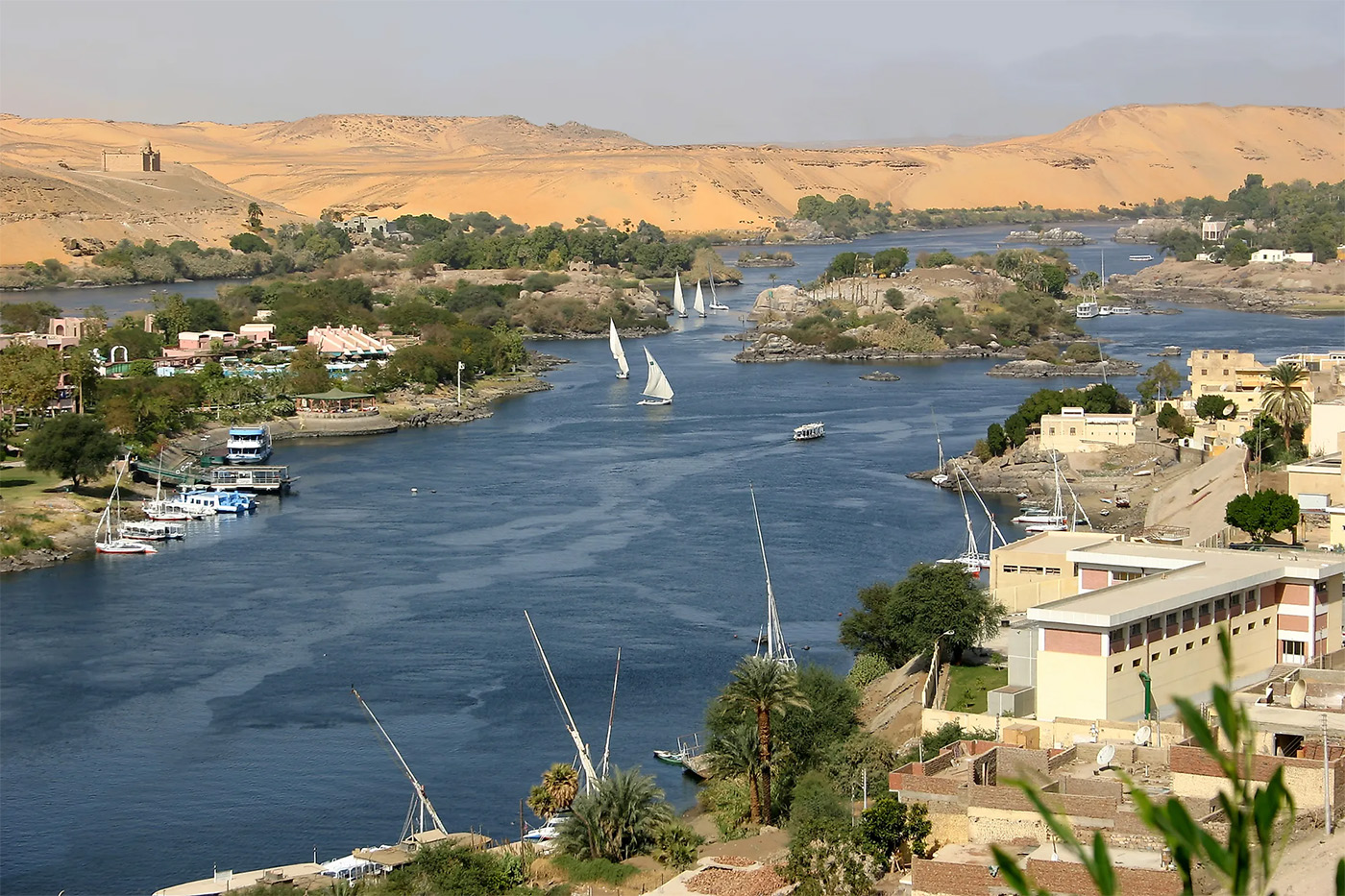
20 interesting facts about Nile River
- 👁️ 1143
The Nile River is one of the longest and most historically significant waterways in the world. Originating in the highlands of East Africa, the Nile stretches over 4,000 miles, flowing through several countries including Egypt, Sudan, and Ethiopia. Here are some fascinating facts about the Nile River:
- The name “Nile” originates from the Greek word “neilos,” meaning “river.”
- The Nile is the longest river in the world, stretching over 4,000 miles.
- The Nile Delta, where the river empties into the Mediterranean Sea, is one of the largest deltas in the world.
- The Nile River is divided into two main branches, the White Nile and the Blue Nile. The White Nile is the longer of the two and begins in the Great Lakes region of central Africa. The Blue Nile originates in Ethiopia and is responsible for the majority of the Nile’s water volume.
- The Nile is responsible for providing water for irrigation and drinking water for millions of people in Egypt and Sudan.
- The ancient Egyptians relied on the Nile for agriculture, transportation, and religion. They believed that the Nile was the source of all life in Egypt and worshipped it as a god.
- The construction of the Aswan Dam in 1970 created Lake Nasser, one of the largest man-made lakes in the world, and revolutionized agriculture and electricity production in Egypt.
- The Nile is home to numerous species of fish, including the Nile perch and Nile tilapia, which are important sources of food for the people living along the river.
- The Nile River is also home to a number of bird species, including the Nile Valley sunbird, the white-tailed swallow, and the African skimmer.
- The Nile River played a significant role in the spread of Christianity in Africa. It was a major trade route, allowing for the exchange of goods and ideas between different civilizations, and helped facilitate the spread of Christianity from Egypt to other parts of the continent.
- In ancient times, the Nile was used for transportation. The river provided a convenient route for trade and the movement of goods and people.
- The river is also a popular tourist destination, attracting millions of visitors each year who come to see the temples, tombs, and pyramids along its banks.
- The Nile has a rich cultural history, with many stories and legends associated with it. It has been the subject of poems, songs, and paintings for thousands of years.
- Despite its importance, the Nile River is under threat from pollution, over-extraction of water, and the construction of dams. Efforts are being made to preserve this vital waterway for future generations.
- The Nile River basin is home to over 300 million people, making it one of the most densely populated regions in the world.
- The Nile is a trans-boundary river, flowing through 11 countries in total, including Egypt, Sudan, Ethiopia, and the Democratic Republic of Congo.
- The ancient Egyptians used the Nile’s seasonal floods to their advantage, relying on the fertile soil left behind to grow crops.
- The river was also a source of inspiration for many ancient Egyptians, who depicted the Nile in their art and literature.
- The construction of the High Dam in Aswan, Egypt, in 1970 had a profound impact on the river, causing changes in water flow and water quality.
- The Nile has been the subject of much scientific study, with explorers and scientists documenting its history and ecology for over two thousand years.











